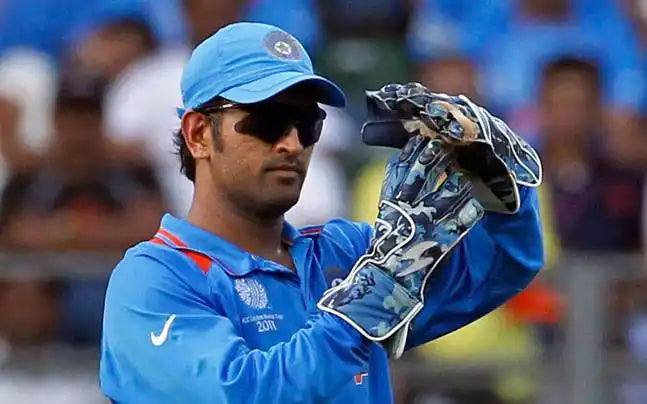Remember the days we used to play box cricket in the streets and gullies or in the backyard, and every decision, be it for a wide, a no ball, or a wicket had to be quarrelled about? Usually the umpire used to be from the batting team’s side and all his decisions used to be biased and the bowling team had no option but to argue about the decisions by the umpire. There was no way to solve this problem for any of us.

Credit: Cric Nerds
The same used to happen in cricket back in the day at the biggest stages too. Remember The God - Sachin Tendulkar getting given out wrongly as a caught behind when the ball hit his forearm and nowhere on the bat or gloves. He was batting at 99 against the Australian Team and was only short of a single run to reach his century! He couldn’t have done anything to challenge the umpire’s wrong decision, couldn’t argue, couldn’t just stand there and not agree to the umpire’s decision, nothing. All he could do was leave the pitch and take that salty walk back to the pavilion. But, in the modern sporting world, it has become extremely important for umpires to give the right decision, to maintain the justice for both teams and ultimately conduct a fair game of cricket.
This is where an innovation and marvel of technology, the DRS Technology comes in and makes the field of play fair for each team.
What is DRS and What is its full form?
The DRS stands for Decision Review System and if you’ve watched football, it is very close to the VAR(Video Assisted Referee), though the VAR has only been around now for a few years, whereas this technology in cricket has been here for more than a decade. It helps out the umpires by using technology based systems to make better decisions. It used to be called the Umpire Decision Review System (UDRS), but they changed the name. So now, when there's a tough call, the players and umpires can use this technology to figure things out. How neat is that?!
Read More: Cricket vs Football

Credit: Mint
And now what we all wait for in life is to see Dhoni challenging all the decisions made by the umpire and always being able to overturn those decisions. And because he’s so good at it, people usually call the DRS as the Dhoni Review System.
The History of DRS:
Preceding the player referral method which we use today, there was a system that only allowed the umpires with decision making and the players had no part in referring or challenging wrong decisions. In the year 1992, this system was introduced to enable on-field umpires to hand over some judgements, like the small margin run outs, stumpings, etc. to the third umpire for review by television replay.

Credit: Deccan Herald
The Player Referral method was introduced by the International Cricket Council and was tested for the very first time in a 2008 Test match between India and Sri Lanka. After testing it multiple times and getting positive and successful results, it was officially used for the first time on 24th November 2009 between New Zealand and Pakistan.
Over time, the International Cricket Council (ICC) has made changes to the lbw protocols and referral system used in cricket matches. In 2012, the margin of uncertainty when the ball hit the batsman's pad was increased, but in 2016 it was reduced. The field umpires' communications with the TV umpire were made available to viewers for the first time in 2014. In 2017, the use of the referral system was agreed for all future ICC World T20 tournaments, with one review per team, but this rule too has changed. DRS was first used in a T20 league during the knockout stages of the Pakistan Super League in 2017, and in a Twenty20 International during the India-Australia T20I series in October 2017.
Nowadays, it is a major part of the sport, it is a tool for conducting a fair and just Match. The ICC did not give an officially recognized status to a series between Pakistan and New Zealand, because of the unavailability of this system for those matches, that’s how important the technology has become in the sport.
How does the DRS Technology work?
To assist the umpires in making better judgements on the cricket field, the DRS makes use of cutting-edge technologies like ball tracking, hotspot, snickometer, and ultraedge. Leg before wicket (LBW), caught behind, and other decisions that are challenging to judge without the right tools are reviewed using these technologies. By asking the third umpire to assess the available technology, the technology allows the on-field umpire to review a decision.
Ball Tracking Technology:

Credit: Quora
With the use of numerous cameras positioned all over the field, ball tracking technology can follow the ball from the moment it is released until it bounces. This technique aids in predicting the ball's trajectory if the batsman's batting pads or any other object had not been hit by it. The ball tracking technology is one of the coolest technologies used in the game. It can be used to check and overturn LBW decisions, no balls and wide decisions in a match.
Hotspot Technology:

Credit: Wikipedia
This DRS technology used one of the best applications of engineering and science in the sport of cricket. Hot spot technology uses thermal imaging cameras to locate the heat generated by friction. By identifying the location where the ball made contact with the bat or pad, this information can be utilised to determine whether a batsman is out or not. Although it was formerly thought to be one of the most accurate methods of getting there or making the proper choice, hotspot technology is not commonly employed nowadays.
Snickometer:

Credit: Quora
Another piece of equipment used in is the snickometer, which shows whether the batsman has touched the ball and whether he has edged it to the wicketkeeper or slips. It aids the umpires in making more accurate rulings by picking up on the slight sounds produced when the ball strikes the bat or pads.
Ultraedge:

Credit: The Bridge
In order to assess if the ball has contacted the bat, Ultraedge uses a combination of sound and video evidence, which is an advancement over Snickometer. Because of this technology, the umpires can make better judgements during the game by receiving even more precise information.
DRS Rules:
A team can challenge the decision of an umpire thrice in an innings in a test match and twice per innings in the limited overs matches, T20s and ODIs. If the umpire’s decision is overturned, the review is successful and is retained. But, if the review fails, it is lost.
Read More:
Earlier, the DRS system in Cricket was only allowed to be used for wicket situations, but now with an increasing number of inaccurate decisions for extras in cricket matches, the technology is also being used to recheck the wide and no ball decisions. The steps below are frequently executed when implementing DRS in cricket:

Credit: Cric Nerds
- If a team feels that an umpire made the wrong call, they can request a review.
- The fielding captain or the batsman declared out needs to signal a “T” sign to the on-field umpire to recheck the decision.
- The on-field umpire signals that a referral has been sought by making a square motion with their hands. .
- The third umpire, who is off the pitch, watches the video and renders a ruling using the technology at his disposal.
- The third umpire communicates their choice to the on-field umpire, or displays his decision in case of a run out or stumping, on the big screen, which never fails to excite the spectators.
Some more protocols that the players and match officials have to follow are:

Credit: Sportsadda
- The request must be made within 15 seconds of the umpire's decision.
- If the on-field umpires believe that a request has not been made within the 15-second time limit, they shall decline the request for a Player Review.
- Players are not allowed to question umpires about their decisions before requesting a Player Review.
- If the on-field umpires believe that the captain or batsman has received any input from sources other than players on the field, they may decline the request for a Player Review.
- Before starting the replays, the third umpire checks if the bowler has not overstepped and made a legal delivery.
- The third umpire moves to the other end to assess the incident in question if the delivery was fair and legal.
- Three different technologies are available to the third umpire: Hawkeye, Ultraedge/Real-Time Snicko (RTS), and Hotspot.
- In the instance of a lbw or an appeal for a catch, the technologies Ultraedge/Real-Time Snicko (RTS) and Hotspot are utilised to determine whether the ball has hit the bat.
- At all stages in implementing the DRS, the third umpire coordinates with the match director.
You need to play like you own the field while batting. It needs tenacity, aggression and confidence. That’s what ZAP cricket bats help you with, they give you the confidence and take your game to the next level so that you never miss or edge the ball and there’s no need for taking a review.
Read More about Cricket Rules here and get well versed with the intricacies of the game.
Conclusion:
By enabling players to contest umpire decisions, the Decision Review System technology has had a huge impact on cricket. The game is now more fair because of technology's reduction in the number of mistakes made by umpires. As players and fans anxiously anticipate the results of each DRS review, it has also raised the intensity of the game.



Share:
Cricket Rules: A Comprehensive Guide
Sir Don Bradman: Cricket's Biggest Legend